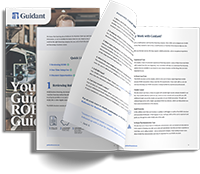You don’t have to look like a body builder to be a fitness buff – everyone from your sister to your neighbor is strengthening and lengthening in a gym or fitness center. Fortunately for business owners, all of those new and existing memberships are adding up: 2015 revenue for the industry was $2.9 billion, and that number is expected to climb to $3.7 billion by 2020. If these numbers sound intriguing to you, one easy way to jump in is to franchise one of the existing gyms and fitness centers. Keep reading and follow our plan to view the benefits of this model (not starting from scratch is a big one), as well as the financial requirements, costs and your options for types of financing.
Franchising a Fitness Facility: Minimum Pain, Maximum Gain
While you may be imagining fitness centers with sweaty gym-goers running on treadmills and furiously pedaling stationary bikes, in truth that’s just 55 percent of the industry. The other 45 percent is made up of tennis and swimming centers, ice rinks, dance studios, and establishments that offer classes only. However, no matter which type of facility you choose to franchise, many of the benefits of franchising remain the same. Here are three:
- Contained costs. Lower startup costs and ongoing operational costs make getting into a franchise easier than starting your own exercise facility.
- Free marketing and branding assistance. One brand who is already offering in-house design services is Anytime Fitness, and it must be working since you’ve heard of that fitness powerhouse, right?
- Complimentary training. This is critical if you are not experienced in the world of gyms and fitness centers, as gym-goers demand experienced, knowledgeable and hard-working staff in this industry.
Investing in Your Future Franchise: Know Your Numbers
Now that you have a better idea of the benefits of franchising a fitness facility, you need to find out which franchise is right for you, and how much it will cost to get started. There are a few general requirements for you as a franchisor: Some operators will require you to have a certain net worth, or an amount of funds in the bank. Also, a good credit score is important, depending on the type of funding you hope to secure down the road. Then, whether you’re interested in franchising a boutique gym or a dance studio, you’ll need to pay a one-time fee to the franchisor and usually a percentage of royalty fees each month. You then operate the property according to the franchisor’s guidelines, and often with their assistance in certain areas of the business such as administrative support, advertising, and training.
Currently, Planet Fitness holds the market share in the industry, and requires a $10,000 franchise fee and ongoing royalty fees of five percent. The aforementioned Anytime Fitness embodies a slightly different model, and requires between $80,000 and $490,000 to get started. After that, you’re charged a flat fee of $499 per club per month (this is different than the standard percentage of the revenue model you’ll find at many of the other gyms and fitness facilities). Minnesota-based Snap Fitness requires a $19,500 fee and ongoing royalty fees of $449 per month. If any of those top three don’t interest you, rest assured there are many more, and you can find them on Entrepreneur.com in its recently published “Top 500 Franchises” list.
Franchise Financing Options: 401(k) Business Funding and SBA Business Loans
When you’re ready to secure your financing, we’ve got good news: You have options, from 401(k) Business Funding, also known as Rollovers for Business Start-ups (ROBS), to traditional Small Business Administration (SBA) loans.
With ROBS, you can invest your eligible retirement funds into your new gym or kickboxing studio – without incurring any new debt. Because ROBS is not a loan, there aren’t monthly payments or interest rates. You can even combine the two types of loans (ROBS and SBA), using a minimum amount of your eligible retirement funds and getting a smaller SBA loan.
Many entrepreneurs choose SBA business loans for their low interest rates and favorable terms. Since SBA loans are provided by a bank or qualified lender, however, the standards are higher for gaining funding. In other words, you need to be able to make a down payment of about 25 percent of the cost of the loan and meet additional lending requirements.
Now that you know the benefits of franchising in the world of fitness, the associated costs of opening a fitness franchise and a couple options for types of financing, you’re ready to exercise your entrepreneurial spirit and get started. Lace up your shoes and run (don’t walk) to lock in your financing as this industry is growing as fast as its memberships.
















